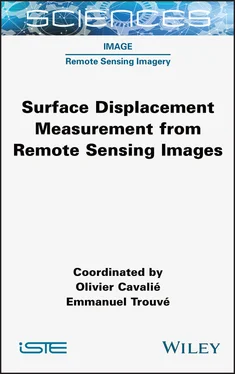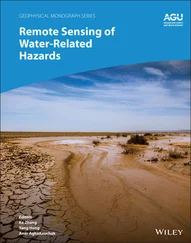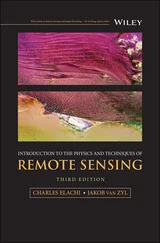1 ...7 8 9 11 12 13 ...16 Data access: DEMs in C-band at 3 sec (90 m) spacing and then at 1 sec (30 m) spacing were released worldwide in 2003 and 2015, respectively, and are still commonly used 20 years after the mission. They are freely available after registration at https://earthexplorer.usgs.gov/. The more sparse X-SAR DEM is available through the geoportal https://download.geoservice.dlr.de/SRTM_XSAR/.
1.2.5. TerraSAR-X, TanDEM-X and PAZ
TerraSAR-X (TSX), TanDEM-X (TDX; TerraSAR-X add-on for digital elevation measurement) (Germany) and PAZ (Spain) are similar satellites launched in June 2007, June 2010 and February 2018, respectively. They are compact “Toblerone” satellites, including a SAR antenna and a solar panel fixed on the main body. This shape is compliant with an heliosynchronous dawn–dusk orbit and has a very low altitude of 515 km compared to previous SAR missions. The two German satellites produced a worldwide DEM, following the incomplete coverage of the SRTM/X-SAR mission, still with the interferometry technique and simultaneous bistatic acquisitions: flying together, various baselines were chosen along the project to refine a 12 m DEM at a specified 2 m vertical relative accuracy (slopes less than 20°). The SAR mission started with different beam modes, such as four-beam ScanSAR (100 km), stripmap (30 km), spotlight (10 km) and high-resolution spotlight (azimuth extension limited to 5 km instead of 10 km). Then, in 2013, six-beam wide ScanSAR (194–266 km) and Staring Spotlight (7.5 km max and limited azimuth swath of 2.5–2.8 km) modes were added as operational modes. Staring Spotlight has a 0.18 m resolution in the azimuth and can use a 300 MHz bandwidth to afford a 0.6 m slant range resolution. Polarization can be in co-pol HH or VV, and dual polarization is available with different combinations depending on the mode used. Quad polarization is only available as an experimental mode. In 2009, a noticeable experiment assessed the TOPS mode interferometric feasibility, before the launch of Sentinel-1 (see Chapter 2, section 2.8; see also Prats-Iraola et al . (2012)).
PAZ data can be combined with TSX with a four- or seven-day time interval.
Data access: TSX and TDX data can be obtained at a low cost for scientific use after submitting a relevant proposal to the DLR. The 3 sec (90 m) DEM has been freely available with registration since October 2018: https://download.geoservice.dlr.de/TDM90/. The most precise DEM is commercially distributed by Airbus Defence and Space: https://www.intelligence-airbusds.com/imagery/reference-layers/.
1.2.6. COSMO SkyMed constellations
COSMO SkyMed (CSK) is the first Italian SAR constellation. Four satellites operate in the X-band on the same dawn–dusk orbit and the ascending node is at 6:00, whereas other satellites often use 18:00. The platform is inherited from the Radarsat-2 prima platform, with right- and left-looking abilities. The launches of the four satellites occurred in June and December 2007, October 2008 and November 2010.
CSK is a dual civil and military mission, and the submetric spotlight is for defense use only. Other modes are accessible for commercial use, i.e. two different ScanSAR modes (100 and 200 km), one stripmap (40 km) and one civil spotlight mode (10 km). The satellites operate in a single-polarization scheme with HH, HV, VV or VH selectable.
COSMO SkyMed New Generation (CSG) is composed of two satellites: the first one was launched in December 2019. Orbiting at the same altitude as the first generation, this new system has significant improvements in terms of agility, resolution and polarizations. It is possible to obtain simultaneous swaths in stripmap mode and also different spotlight images on the same orbital span. The system also adds quad-polarization possibilities in stripmap. For civilians, three spotlight modes are possible, in single or dual polarization. Stripmap always has the same 40 km swath in single polarization as well as in dual polarization. As for the first generation, a narrow ScanSAR of 100 km and wide ScanSAR of 200 km are possible, again in single or dual polarization.
Data access: Archived products can be seen and commercially ordered through the eGEOS portal at http://catalog.e-geos.it/.
Satélite Argentino de Observación con Microondas (SAOCOM) is an L-band SAR program from Argentina’s space agency the Comisión Nacional de Actividades Espaciales (CONAE). The two satellites SAOCOM-1A and SAOCOM-1B were launched in October 2018 and late August 2020, respectively. Agreements with the ASI made it possible to put SAOCOM satellites on the same orbit as the CSK constellation, providing the opportunity of obtaining X-band and L-band images at a 10-minute interval. CONAE implemented a TOPSAR mode, as in Sentinel-1, for the narrow ScanSAR of 170 km and a wide ScanSAR of 350 km, as well as a stripmap mode of 40 m at 10 m resolution. Single or dual polarization HH, HH+HV, VV or VH or as well as quad polarization, are possible.
Data access: Some archive images can be accessed through the portal at https://catalog.saocom.conae.gov.ar/catalogafter registration.
Sentinel-1 belongs to the Copernicus European program, but the conception and operations were delegated to the European Space Agency. This is the first long-term program that has really taken InSAR as an operational objective, with a very small orbital tube of 100 m radius and 12-day repeat pass, which comes down to six days with two satellites (S1A and S1B), and possibly four days with three satellites operating, as Sentinel-1C and 1D have already been authorized. Sentinel-1A and 1B were launched in April 2014 and April 2016, respectively.
In contrast to the Envisat mission, a focus on a consistent archive is of prime interest and most emerged land is monitored, with the maximum capacity of any system operating in Europe. There are four basic modes: extra wide (EW) ScanSAR of 400 km in five subswaths, interferometric wide (IW) ScanSAR of 240 km in three subswaths, six stripmap modes about 80 km each, and a wave mode (20 km images every 200 km at incidences of 23° and 36°) for open ocean. IW is the privileged mode for land, avoiding gaps, and sometimes uses single-polarization VV, but most of the time dual polarization has been used since Sentinel-1B was launched.
IW is the main operational mode: the ScanSAR mode includes the TOPS mode successfully tested on TerraSAR-X (see section 1.2.5). Agility for the antenna is introduced along-track (azimuth) from backward to forward, for each burst of about 20 km. Each IW subswath consists of 9–10 bursts delivered with their own auxiliary parameters. Each burst is precisely synchronized between each acquisition so that interferometry is always possible.
The next two Sentinel-1 satellites, S1C and S1D, are quite similar to S1A and S1B and are in a building/storage phase untill launch, which will probably occur in 2022/2023 and 2024/2025, with the same operating modes for SAR images, but with increased capacity for maritime surveillance (AIS payload). This will hopefully insure continuous SAR data from October 2014 to beyond 2035, which has never happened in a space program to date. Hopefully, the system will operate with three satellites and four-day repeat pass interferometry on a large scale, at least over Europe.
Some limitations of the mission with regard to interferometry: In contrast to stripmap, the IW mode introduces additional complexity with regard to interferometry: to avoid phase jumps in the final image, very precise coregistration and phase examination in burst overlaps must be achieved. Products do not always cover the same area on the ground and splitting/gathering bursts in several products may be necessary.
Читать дальше












